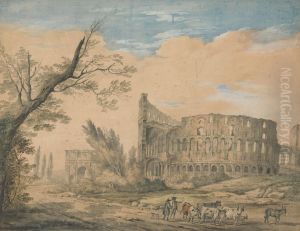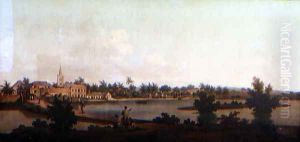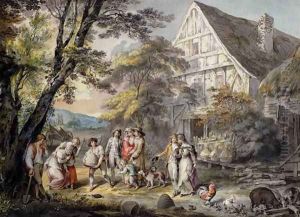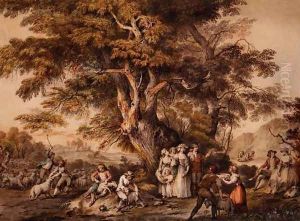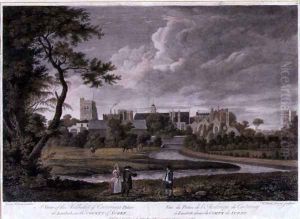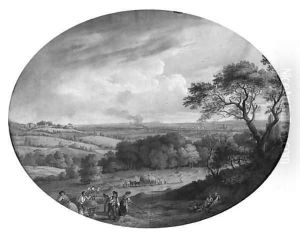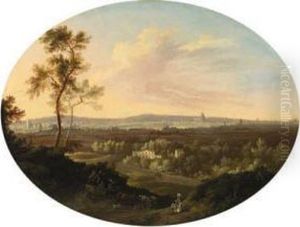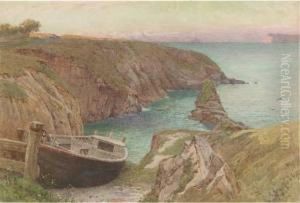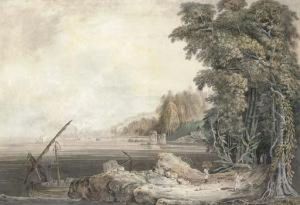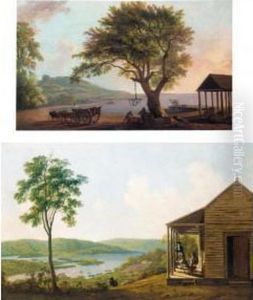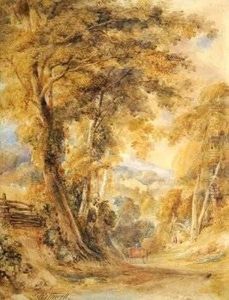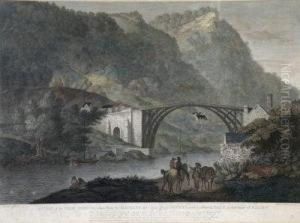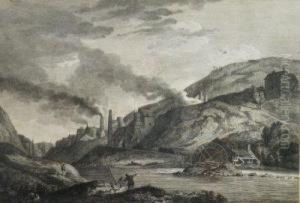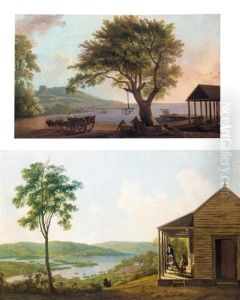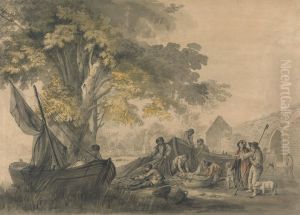George Robertson Paintings
George Robertson was a British artist and illustrator, recognized primarily for his landscapes and topographical works. Born in 1748, Robertson's early life details are somewhat scarce, but it is known that he demonstrated a keen interest in art from a young age. His work is often associated with the 18th-century British landscape tradition, which sought to capture the picturesque and sublime aspects of nature.
Throughout his career, Robertson developed a distinctive style that combined detailed observation with a romantic sensibility, making his landscapes not just records of places but also expressions of mood and atmosphere. He was particularly adept at watercolor, a medium that was gaining popularity in England during his lifetime. His ability to manipulate light and shadow, as well as his skill in depicting water and sky, set his work apart from many of his contemporaries.
Robertson's contributions to the field of topographical illustration were significant. He traveled extensively within the British Isles, capturing the diverse landscapes of the country. These travels resulted in a number of published works that were highly regarded for their accuracy and beauty. His illustrations provided viewers with a glimpse into the scenic variety of Britain, from its rugged coastlines to its tranquil rural settings.
Despite his success, Robertson remained relatively modest about his achievements. He was not as well known as some of his peers, such as J.M.W. Turner or Thomas Gainsborough, but his work was respected among art connoisseurs and collectors. After his death in 1831, Robertson's contributions to British art were somewhat overshadowed by the Romantic movement and the rising popularity of other artists. However, in recent years, there has been a renewed interest in his work, with art historians and collectors recognizing the skill, beauty, and historical value of his landscapes and illustrations.
George Robertson's legacy is that of a skilled landscape artist who captured the essence of Britain's natural beauty with a keen eye and delicate touch. His work continues to be appreciated by those who value the intersection of art, nature, and history.
